Circuit Court Alert:

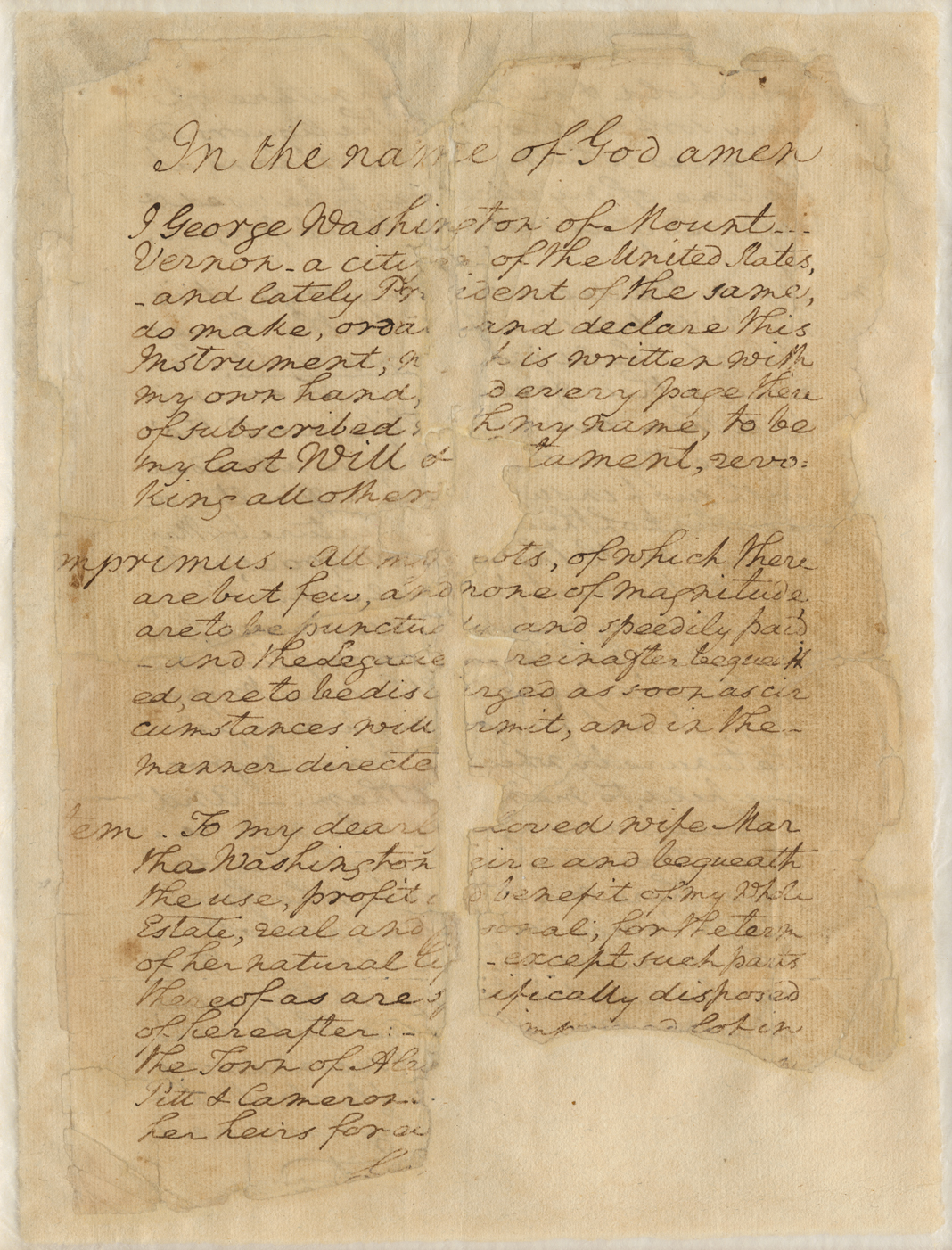
Fairfax Circuit Court was the court of record in which the wills of George and Martha Washington were probated. George Washington’s will was probated January 20, 1800 at the Fairfax Courthouse in Alexandria. Martha Washington’s will was probated June 21, 1802 at the new courthouse site – today’s Historic Fairfax Courthouse at the center of the City of Fairfax.
Due to conservation and preservation reasons, George and Martha Washington’s wills are not on permanent display. However, one page of George Washington’s will is loaned for exhibit at Mount Vernon; the page on display is rotated every six months.
You can read more about the wills of George and Martha Washington, and view them in their entirety, here.
The image at left shows the first page of George Washington’s will. The document is 29 pages, front and back, written and signed in Washington’s own hand.
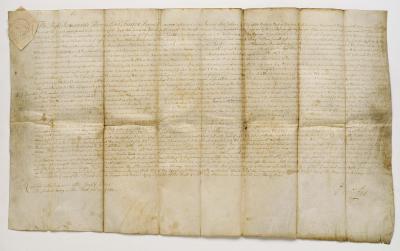 Thomas, Sixth Lord Fairfax, Baron of Cameron owned the Northern Neck Proprietary – 5.2 million acres of the Northern Neck of Virginia, and land northwest into modern-day West Virginia. William Fairfax, Lord Fairfax’s cousin, acted as his land agent, selling warrants to the land, which were then granted to the settlers. Fairfax Circuit Court holds an original 1739 Northern Neck Grant, written on vellum, signed by William Fairfax to John Colvill for 5,568 acres in what is now known as Wolf Trap Farm Park and Great Falls.
Thomas, Sixth Lord Fairfax, Baron of Cameron owned the Northern Neck Proprietary – 5.2 million acres of the Northern Neck of Virginia, and land northwest into modern-day West Virginia. William Fairfax, Lord Fairfax’s cousin, acted as his land agent, selling warrants to the land, which were then granted to the settlers. Fairfax Circuit Court holds an original 1739 Northern Neck Grant, written on vellum, signed by William Fairfax to John Colvill for 5,568 acres in what is now known as Wolf Trap Farm Park and Great Falls.
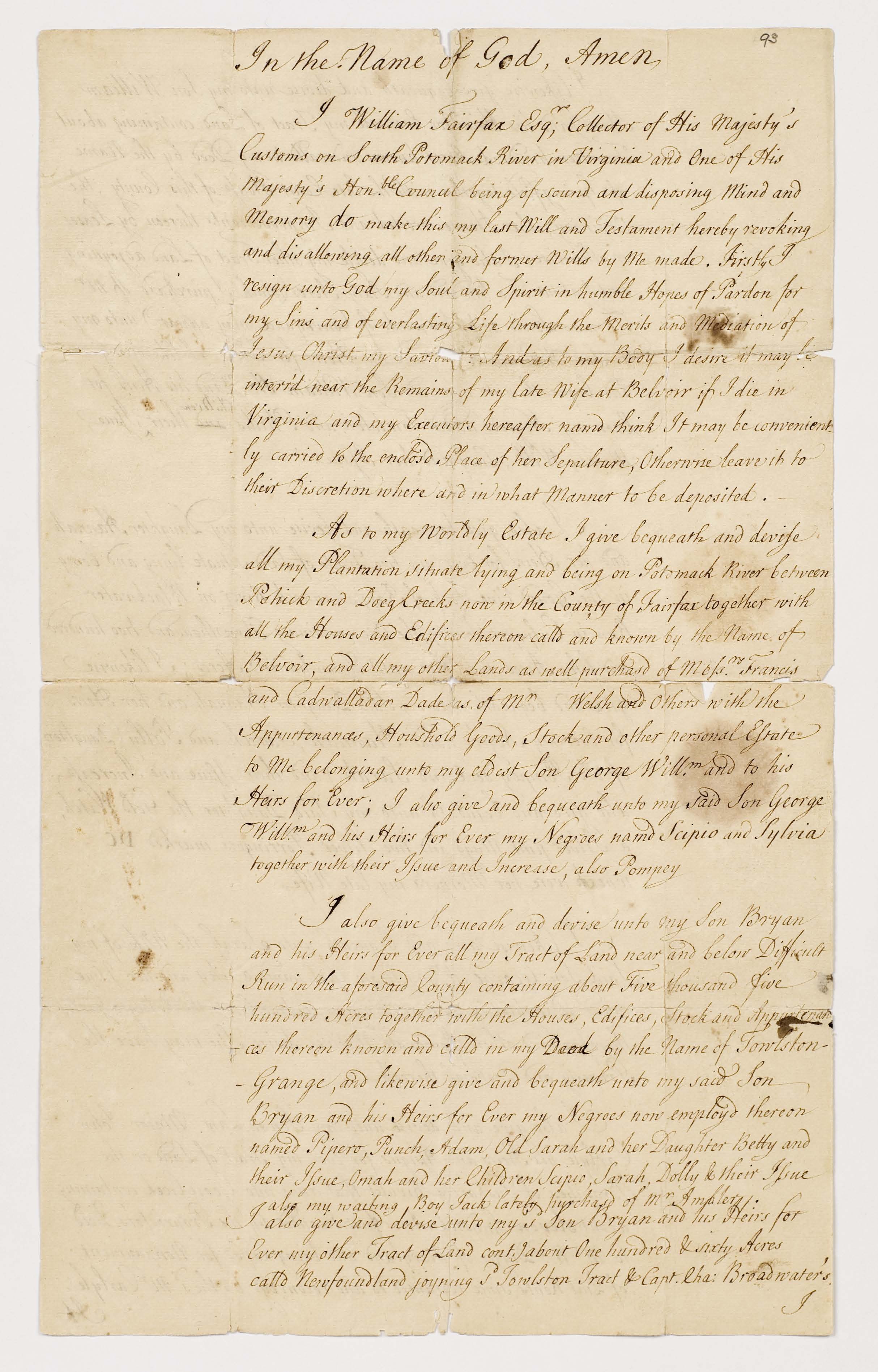
Fairfax Circuit Court Historic Records Center is custodian of William Fairfax’s handwritten will. A relatively simple document, Fairfax gives land, slaves and other personal property to each of his children, and desires that his body be buried at Belvoir, the Fairfax family plantation on the Potomac River. The ruins of the mansion now lay within the bounds of Fort Belvoir and it and the Fairfax family graves are listed on the National Register of Historic Places.
During his lifetime, William Fairfax served as Collector of Customs for Barbados; Chief Justice and Governor of the Bahamas; Collector of Customs in Massachusetts; and Collector of Customs, House of Burgess member, and President of the Governor’s Council in the Commonwealth of Virginia. William Fairfax was also first cousin to Thomas, 6th Lord Fairfax, and served as one of his land agents who managed the Northern Neck Proprietary. This image shows the first page of William Fairfax’s will.
Although better known for his role in drafting the Fairfax Resolves and the Virginia Declaration of Rights, from 1765 until his resignation in 1788, George Mason served as a sworn justice of Fairfax County. Mason presided over many kinds of court matters, the records of which are held at the Historic Records Center. A unique record held at the HRC is Mason’s award (judgment) regarding a land boundary dispute between Peter Smith and James Jennings, written in his own hand, signed, and sealed. 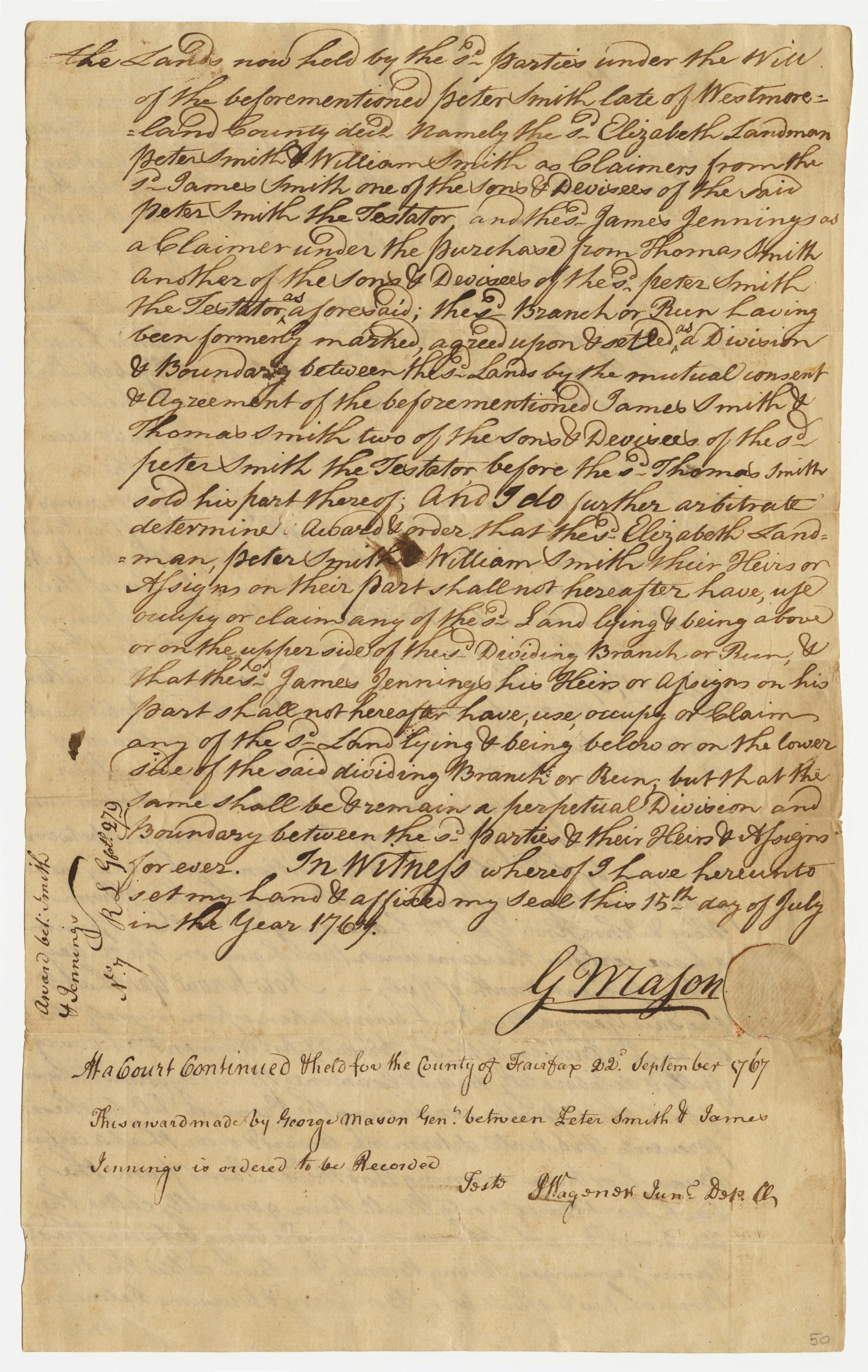
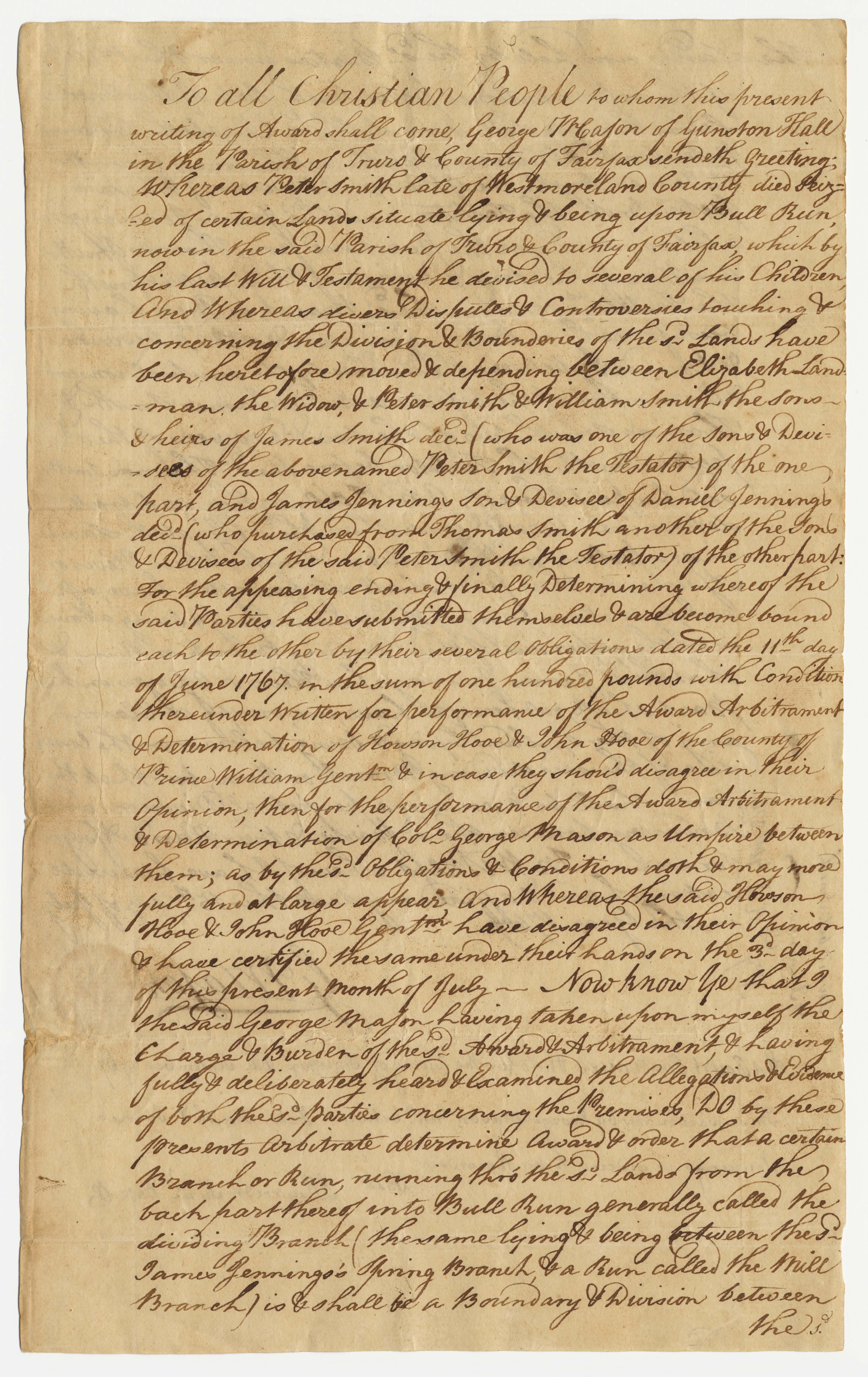
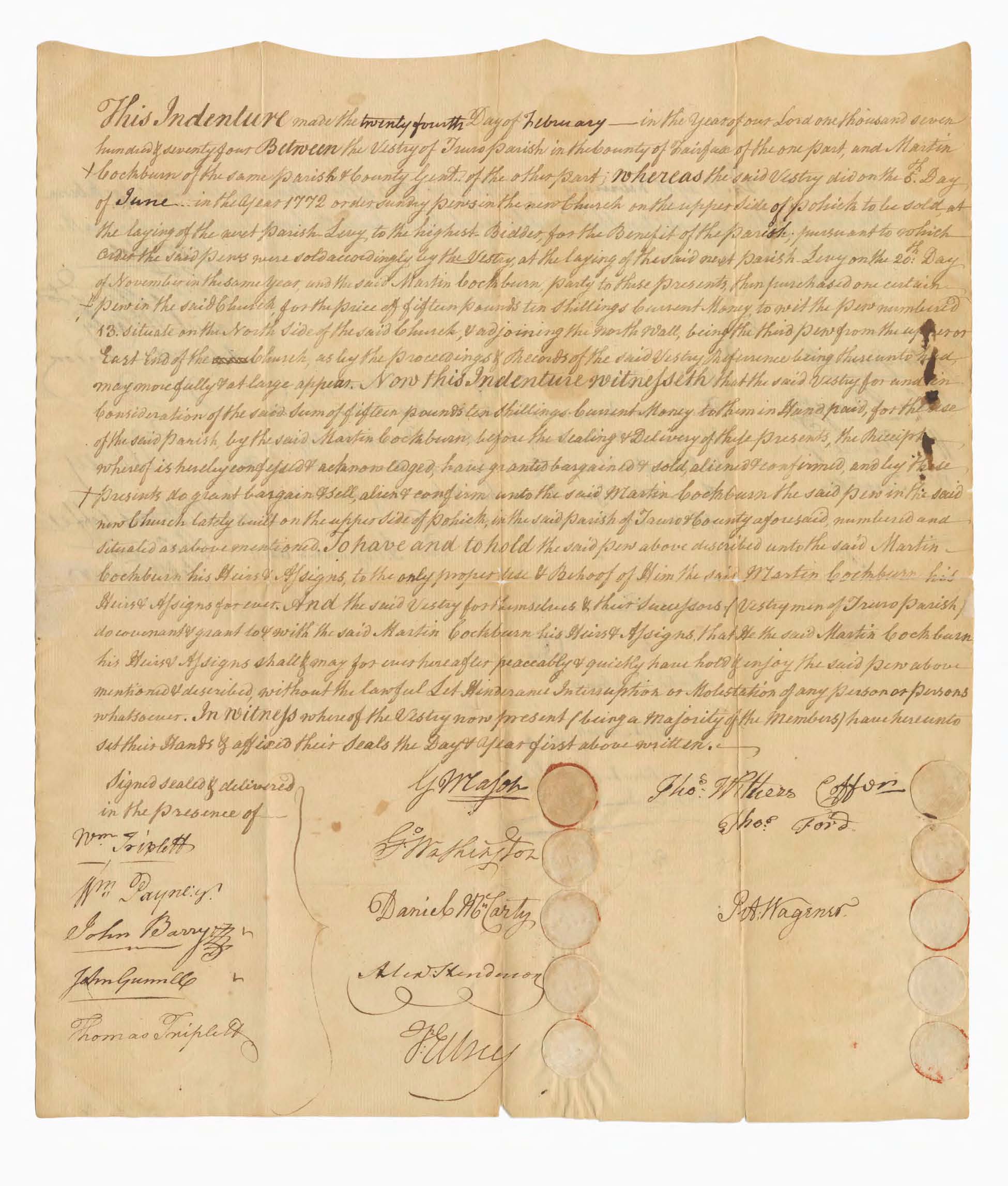 At the time Pohick Church was built (1774), it was an Anglican custom for landed gentry to purchase private box pews to provide private space at public worship. The custom also helped defray the cost of the new church’s construction. Fairfax Circuit Court is custodian of two original deeds for church pews in Pohick Church, dated to 1774, signed by George Washington, George Mason, and other Fairfax County notables who were members of the vestry of Truro Parish. The pew deed pictured is for the pew Martin Cockburn purchased from the Truro Parish Vestry in March 1774.
At the time Pohick Church was built (1774), it was an Anglican custom for landed gentry to purchase private box pews to provide private space at public worship. The custom also helped defray the cost of the new church’s construction. Fairfax Circuit Court is custodian of two original deeds for church pews in Pohick Church, dated to 1774, signed by George Washington, George Mason, and other Fairfax County notables who were members of the vestry of Truro Parish. The pew deed pictured is for the pew Martin Cockburn purchased from the Truro Parish Vestry in March 1774.
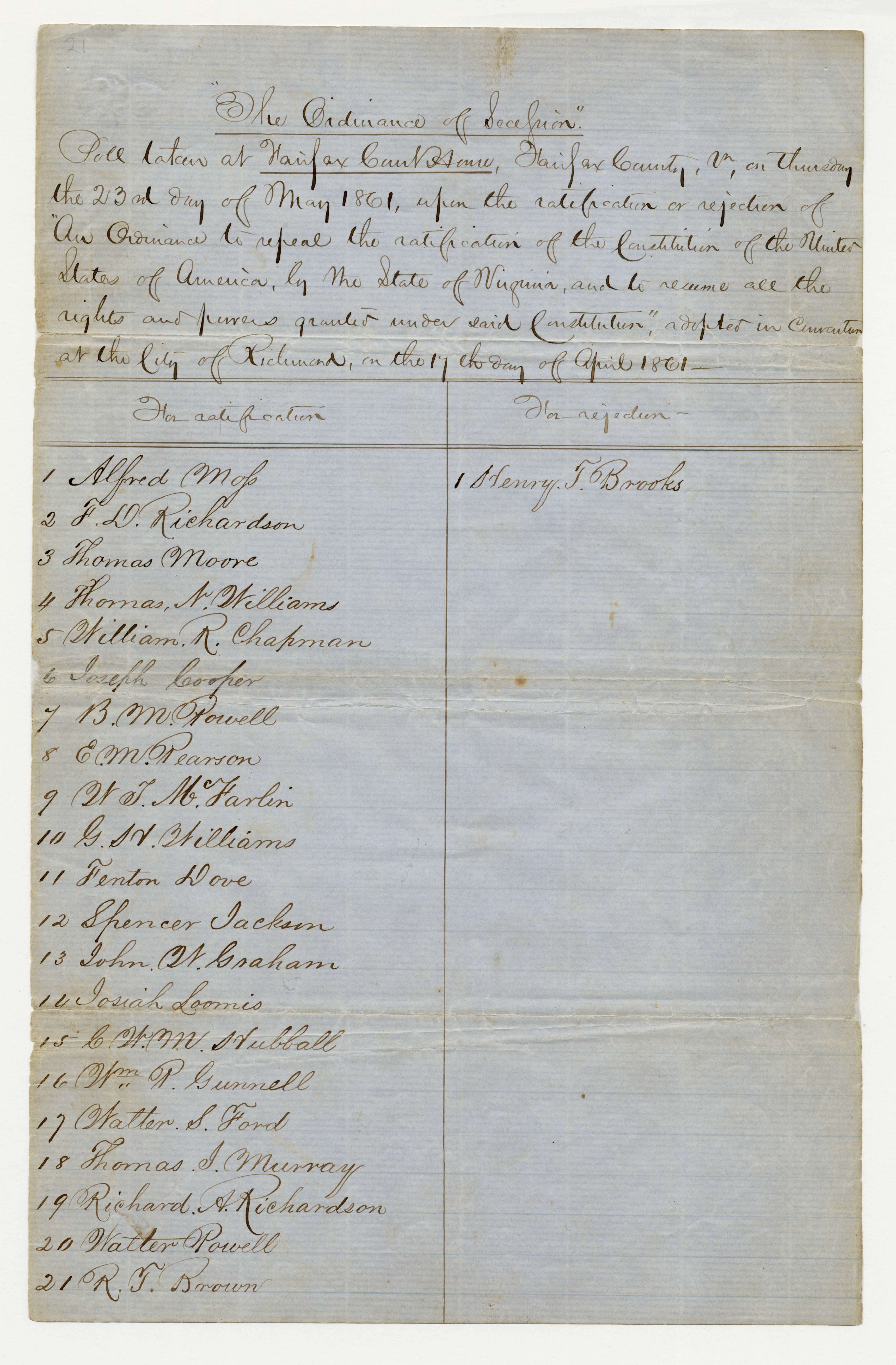
On May 23, 1861, a vote was held at fifteen polling locations across Fairfax County to decide if the county would join the rest of Virginia in leaving the Union. The Ordinance of Secession polling lists shows how county residents cast their votes. Overall, 76% of Fairfax County residents voted to ratify the Ordinance of Secession, while 24% voted to reject it. Most of the residents who did not support the ratification of the Ordinance of Secession lived in heavily Quaker-populated areas of the county, such as Accotink and Lewinsville (near modern-day McLean). This image shows the first page of the polling return taken at Fairfax Courthouse.
During the spring of 1862, in the midst of the American Civil War, Union troops established a stronghold at Fairfax Courthouse and the surrounding town (known at the time as Providence). The Union occupied this area of Fairfax County for the remainder of the war. During the occupation, both the Fairfax Courthouse and the Clerk’s Office housed soldiers and supplies. Some court records, stored in the Clerk’s Office, served as a diversion for Union soldiers to draw, practice their penmanship, or write about their wishes for the outcome of the war. These two pages demonstrate such “graffiti,” and more examples can be found throughout the court’s pre-1865 records and around
During the spring of 1862, in the midst of the American Civil War, Union troops established a stronghold at Fairfax Courthouse and the surrounding town (known at the time as Providence). The Union occupied this area of Fairfax County for the remainder of the war. During the occupation, both the Fairfax Courthouse and the Clerk’s Office housed soldiers and supplies. Some court records, stored in the Clerk’s Office, served as a diversion for Union soldiers to draw, practice their penmanship, or write about their wishes for the outcome of the war. These two pages demonstrate such “graffiti,” and more examples can be found throughout the court’s pre-1865 records and around the City of Fairfax.
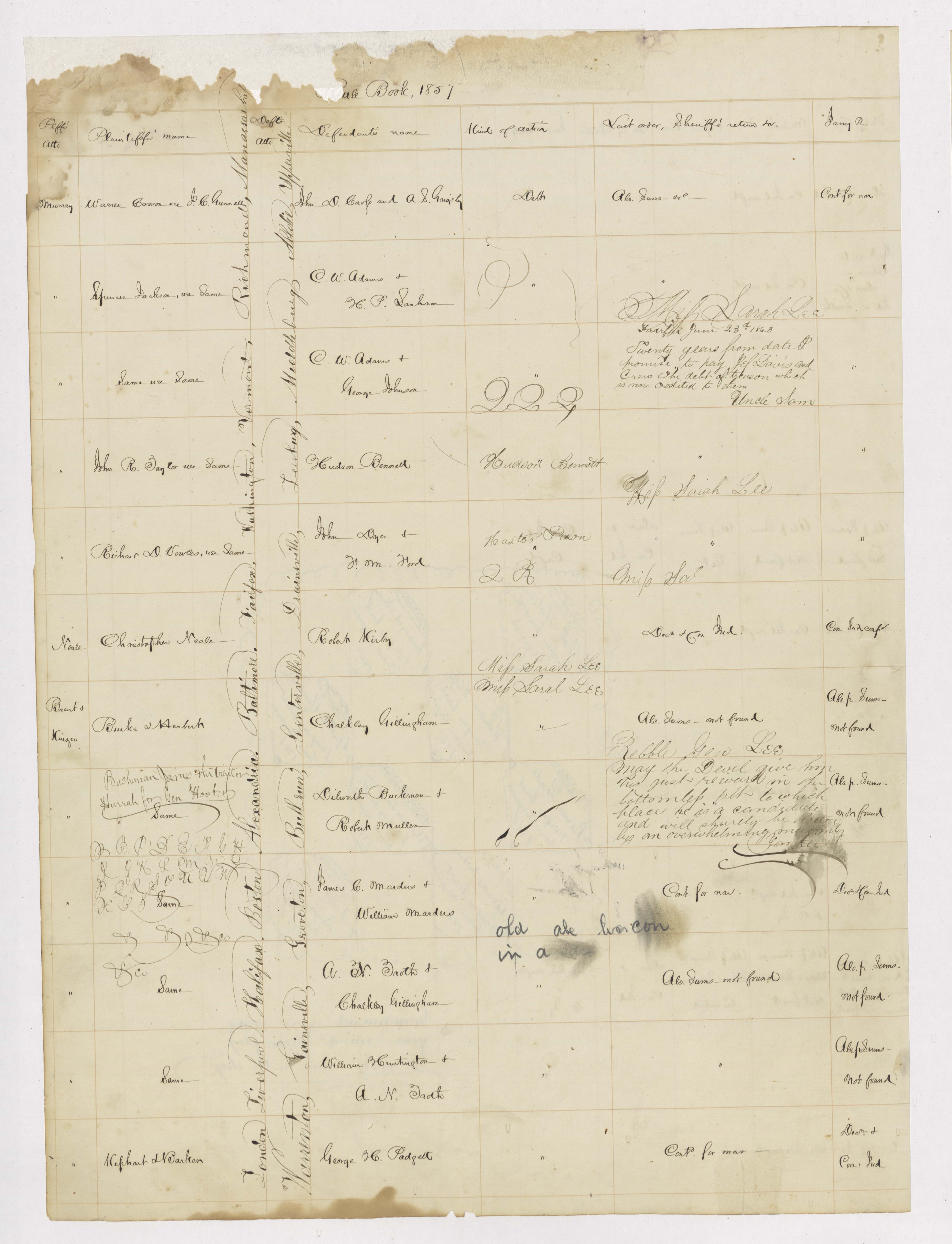
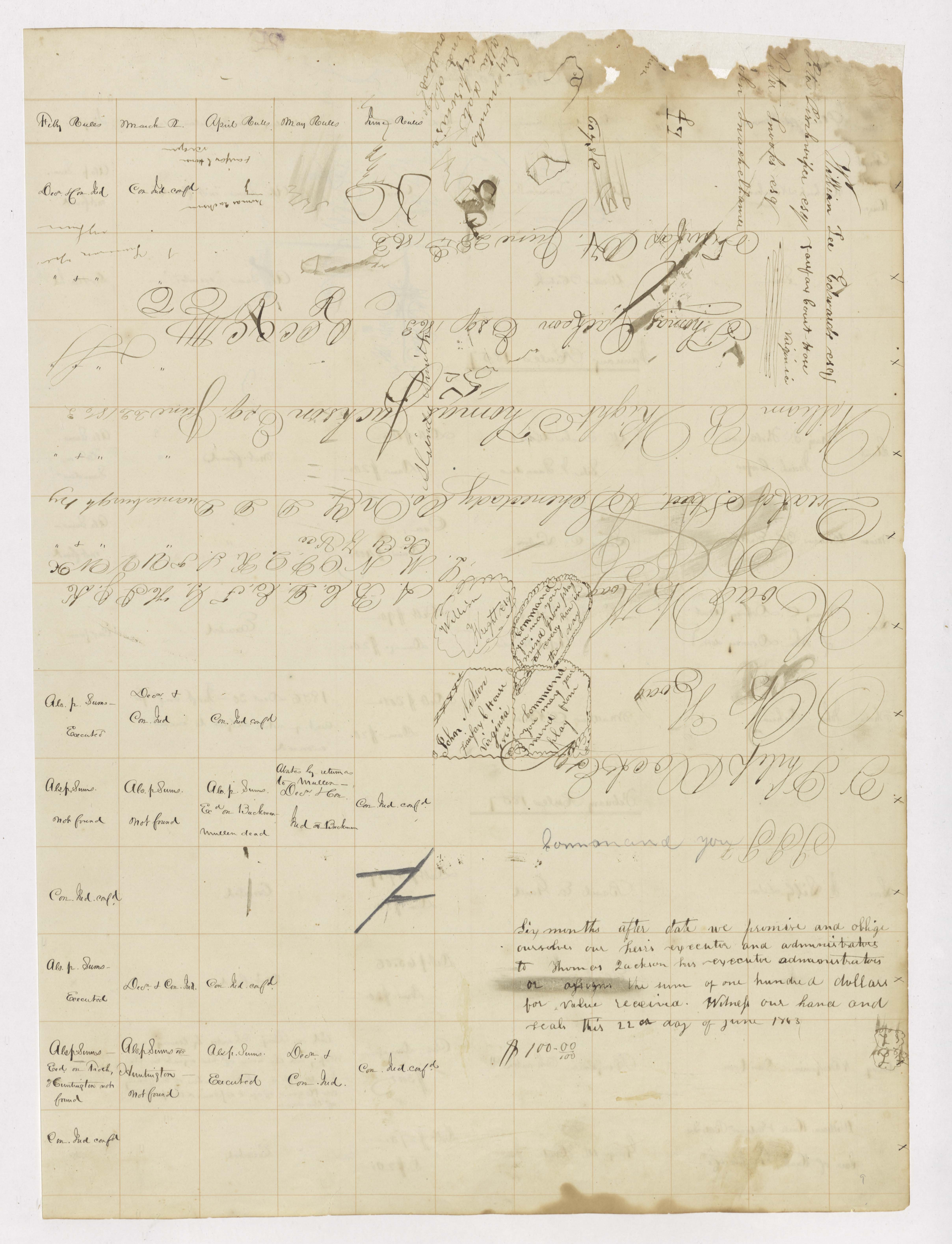
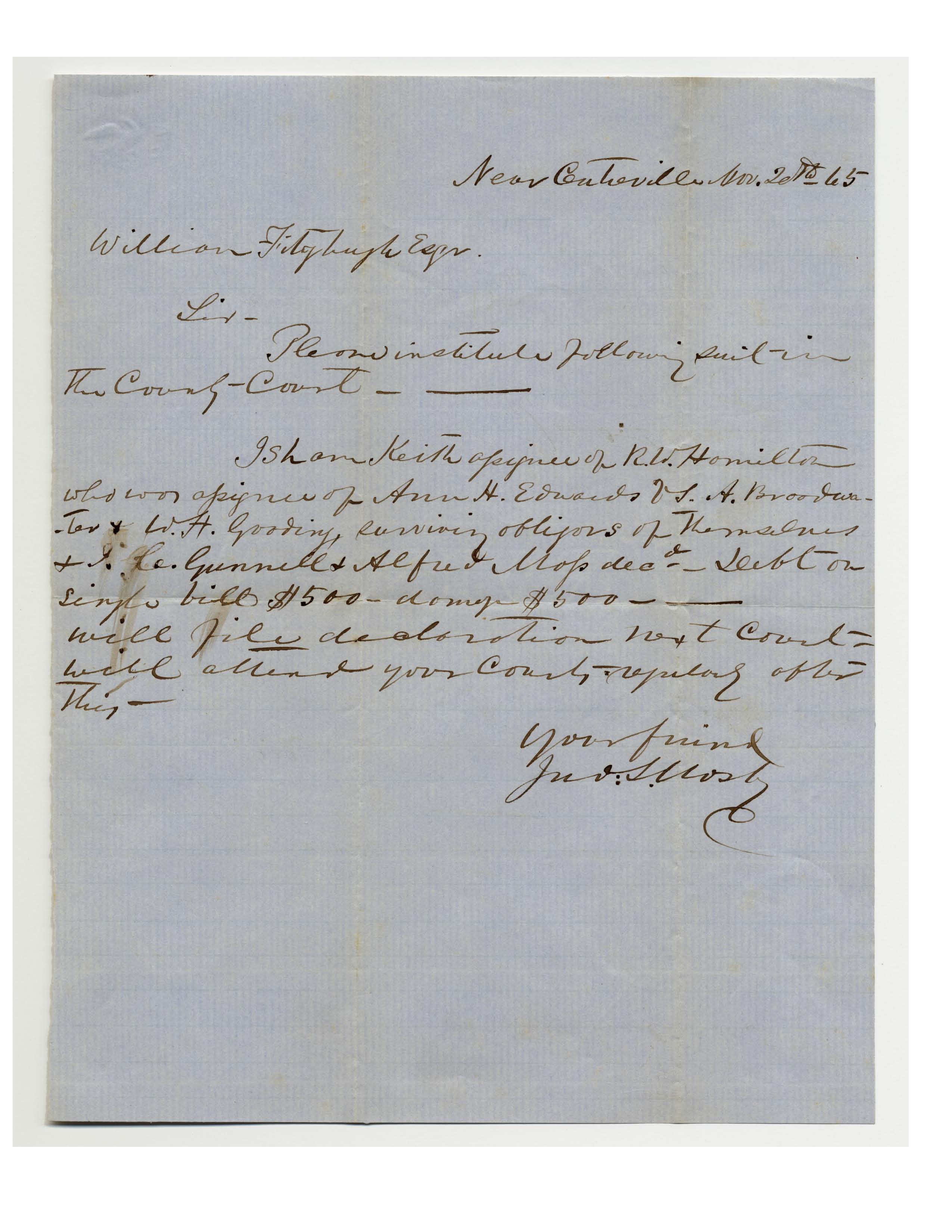 John Singleton Mosby commanded a troop of forces during the Civil War known for staging raids and harassing Union Troops in Northern Virginia. His skill at evading capture earned him the nickname “The Grey Ghost.” After the war, Mosby returned to practicing law; however, his parole was granted only to Fauquier County – Mosby made several attempts to visit neighboring county courthouses, including Fairfax’s, in the latter part of 1865 and was frequently arrested. Seemingly fed up with this, Mosby began to write letters to colleagues to file papers on his behalf. In this letter, Mosby asks Clerk of Court William Fitzhugh to institute a suit in the county court for him.
John Singleton Mosby commanded a troop of forces during the Civil War known for staging raids and harassing Union Troops in Northern Virginia. His skill at evading capture earned him the nickname “The Grey Ghost.” After the war, Mosby returned to practicing law; however, his parole was granted only to Fauquier County – Mosby made several attempts to visit neighboring county courthouses, including Fairfax’s, in the latter part of 1865 and was frequently arrested. Seemingly fed up with this, Mosby began to write letters to colleagues to file papers on his behalf. In this letter, Mosby asks Clerk of Court William Fitzhugh to institute a suit in the county court for him.
